The United Kingdom and New Zealand have announced plans to deepen their defence, security, and economic partnerships following a meeting between Prime Minister Sir Keir Starmer and New Zealand Prime Minister Christopher Luxon in England on 21 April.
According to a statement from the UK Government, the two leaders visited Operation Interflex, where British and New Zealand forces are jointly training Ukrainian troops. New Zealand has contributed to training more than 54,000 Ukrainian soldiers and is expected to confirm an extension of their involvement until the end of 2025.
Prime Minister Starmer praised the partnership, stating: “From the beaches of Gallipoli, to the vital work we have been doing together on Operation Interflex and our support for Ukraine, the UK and New Zealand have stood shoulder-to-shoulder for generations in pursuit of peace and stability.”
The leaders also agreed to intensify military cooperation, with instructions given to defence ministers to draft a new joint defence partnership to succeed the previous agreement from 2015. This follows increases in defence spending by both nations — the UK to 2.5% of GDP and New Zealand to 2%. A notable step in this new collaboration will see the Royal New Zealand Navy’s frigate HMNZS Te Kaha join the UK Carrier Strike Group in the Indian Ocean as it begins its Indo-Pacific deployment.
In addition, Prime Minister Starmer announced a £30 million contract for drones from New Zealand firm SYOS Aerospace to support Ukraine, creating 45 jobs at a facility in Fareham, Hampshire. The move, Starmer said, reflects the government’s Plan for Change, aimed at “putting money back in the pockets of working people through highly skilled jobs, a strong and resilient economy, and greater opportunity.”
Beyond defence, economic collaboration was a key focus. The leaders committed to expanding free and open trade, particularly through the Comprehensive and Progressive Agreement for Trans-Pacific Partnership and the UK-New Zealand Free Trade Agreement. According to the government, bilateral trade in goods and services between the two nations reached £3.6 billion in the year to September 2024, up 5.3% from the previous year.
The press release also highlighted recent commercial successes, including Scottish firm Emergency One winning a contract to supply emergency vehicles to Fire and Emergency New Zealand, supporting 25 jobs in Scotland, and a new investor partnership to boost agricultural technology development.
Prime Minister Starmer concluded: “As the world becomes an increasingly dangerous place, I am proud how much we are doing together to support our national and economic security – stepping up our defence spending, deploying our navies together in the Indo-Pacific, and continuing our work to put Ukraine in the strongest possible position to deter an increasingly aggressive Russia.”



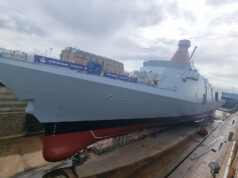
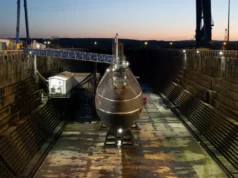

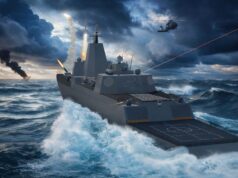
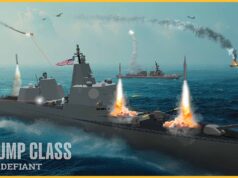
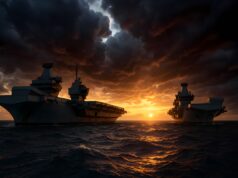
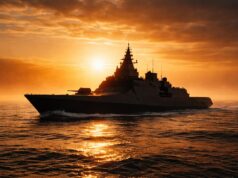

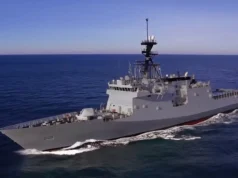

I wonder if they would be interested in the T31 in the future – assuming T26 is out of their reach but if their new budget allows it then it would make sense to share a platform with Australia.
As much as it would be fantastic for us to sell them a pair (potentially also help us pave the way for a joint order for more with them as they’d have to built here) it just wouldn’t make much sense for the RNZN. As part of their new defense splurge they want to increase interoperability with Australia across all domains and turn the New Zealand armed forces into a force multiplier for Australia as opposed to an independent fighting force, Australia will be introducing a new class of light frigate to bolster their total hull numbers in the next decade and whatever class Aus buys will likely end up being what NZ.
We still have other opportunities to sell the NZDF British weapons. One of the biggest capability overhauls they are focusing on is long range strike and ASW using the P-8 and future combat helicopters. HMA2 Wildcat has already had to industry engagement as a potential procurement for NZ which would also pave the way for Martlet (they also want ground based CUAS weaponry which would make LMM even more appealing if a common stock could used in their future helicopter as well) and SEA Venom to replace the current Penguin missiles. Their P-8s could take Stingray and follow suit with us and Norway and again could also be used on a potential Wildcat purchase as well.
Mostly speculation on the last part but , I wouldn’t get your hopes up about T-31 export to NZ.
goo to see another forgotten commonwealth country returning to the front page a loyal and trustworthy friend who is not considered as a naval power at all. historically they consistently produce good sailors and perform well with other tiered nations
goo to see another forgotten commonwealth country returning to the front page a loyal and trustworthy friend who is not considered as a naval power at all. historically they consistently produce good sailors and perform well with other tiered nations the kiwis should have been given Monmouth and montrose.we didn’t want them if NNZhad, I’d have been more than happy to see it done
NZ doesn’t have to choose the same frigate as the RAN and the light frigate mayn’t be right for them neither or the timing of it or the manufacturing of it. NZ may want to maximise its input and systems choice from day one. Hope it’s a win win for both UK and NZ and that the Wildcat gets up and its associated missiles and torpedos.
This may soind a bit nutty, bit if Australia wants more ships more initial why not a split 5/6 buy of different types? On type for West -North East -North?
*sorry for the typos there.
If the updated Mogami gets the contract, then it’s not really a ‘light’ frigate. Maxes out at 6,200t & 32 mk41 vls plus 127mm main gun, it’s reasonably close to the A140 in size. Whatever gets the nod, 8 will be built in Australia, which means more NZ involvement (NZ companies are part of the Australian shipbuilding scene since the Anzac build). It is expected Australia will ‘Australianise’ the design somewhat for its own build, so if NZ announce early, they can effect the outcome of a 11-12 ship local build. There is also no restrictions on NZ workers & families in Australia. While a UK built A140 is a possibility, it doesn’t offer the NZ participation benefits that an Australian build does. Neither Australia or UK are cheap places to build.
While all of that is true RAN tend to over complicate their ships – see Hunter for great example of how *not* to do it.
It is also going to be a hoofingly expensive build.
Australia needs to optimize its naval capability to meet the threat it faces from the PLAN in the Pacific – this may or may not align with European navies and the threats they face.
The type 55 destroyer that recently circumnavigated Australia, has 112 VLS cells and outguns both the Hobart Class AWDs and the standard fitout of Hunter Class.
Which is why I hope to God that the RAN takes up the BAE proposal to up gun the Hunters and triple the VLS cells from 32 to 96 and double the NSM canisters from 8 to 16. The additional 64 VLS will partially replace the multi mission bay and provide enough magazine depth (with some quad packed with ESSMs) to go toe-to-toe with the Chinese.
So no apologies necessary for ‘Australianising’ any of our naval platforms, including the Mogami, to meet our strategic needs or develop sovereign capabilities (CEAFAR, SAAB 9LV, Nulka etc.)
SB
While I take your point, these are supposed to be gp frigates. Hunter is definitely not a gp frigate. Will Hunter deliver? I suspect nobody knows, but BAE definitely hopes so. If it does, then RAN next destroyer is already designed & I would expect RCN will also build a version. 15 RCN versions, as currently put forward as the River class, doesn’t cut it. It’s not a destroyer, despite what the Canadians may claim. 9 River heavy frigates & 6 Hunter AAW derivatives makes more sense. T83 has Hunter written all over it. I don’t expect a T83 announcement until the first Hunter hits the water. If it works as advertised, T83 is done. BAE didn’t sell RAN on a T26, they sold them on an T83. Delivering is of course another matter.
The reason for the gp build is because of the Hunter build. Same reason as the T31 vs T26 build. Except Australia would never dumb down A140 to the T31 level. They have already been there with the Anzac frigate & have been modifying the hell out of it at great expense ever since. RN are now started down the same path with T31. Defence is always a balancing act. There is gold plating & there is tin plating. Both usually waste money.
The UK is actually a cheap place to build.
NZ could also look at the Vard Marine Vigilance project that is possibly in the works to replace the Canadian Kingston class minesweepers/patrol ships.
They are are modular vessels with a mix of ASW, minesweeper capability or have a surface and air firepower corvette to bolster bigger ships.
NZ needs at least 3 war capable frigates. Patrol OPV’s they already have & will likely replace with similar. A specialist Southern Ocean patrol ship is also needed – something similar to RCN high arctic ships, but capable of handling the Southern Ocean. NZ doesn’t have any destroyers. Frigates are their front line fighting ships (currently only 2). Without frigates, NZ is militarily irrelevant. They have little else (except NZSAS). RNZAF had to fight just to get torpedoes on their new P8 maritime patrol aircraft. Sad really.
DJ – trying to unpick what you wrote, you are suggesting that the future Type 83 should use the RAN Hunter class as a baseline, after you said no one knows if it will deliver, please make that make sense.?.
Good point on common operating surface platforms with AU, makes complete sense. However, touting Wildcat as a replacement for the Seasprite goes against the principle of conman operating platforms when the AU navy flying around in MH-60 Seahawks. Talking to some people in NZ recently and their preference is Seahawk.
In saying that global politics may play a big part with many countries now looking for ITAR free systems, not sure if Wildcat is ITAR free but would certainly be more so than a MH-60.
Just my humble opinion!
Sea Venom is not really a replacement for Penguin. Penguin a heavy weight longer range missile. Konsberg’s replacement is a helicopter launch version of the NSM. Wildcat is a little too small, especially if you are only having one type in service. MH-60 is somewhere between Wildcat & Merlin, can handle missiles like NSM, hellfire/brimstone, sonar & the same torpedoes that NZ currently use. NZ can also borrow spare parts from Australia. The closest Wildcat user is some distance away.
NSM from helicopters? Maybe the UK could also buy or try for a bulkier loner range Venom or even Spear 3?
It’s called NSM-AL. Look it up on Konsberg’s site. Range 180km, designed for subsonic aircraft such as helicopters. I believe India is looking at it for its MH-60R naval helicopters. This is a completely different class to Venom or Spear 3 (180km range & 120kg warhead). It is stated as the actual Penguin replacement from the company that made Penguin.
Hasn’t there already been a Babcock presentation of the A140 to NZ a while back? So it might still have a chance. A pair of A140s are being built by Indonesia too, but not sure if anything can be gained by that with co-manufacturing.
It is a negative for A140 that Indonesia are building two.
That said I’ve no idea how good the sensor and electronics fit will be?
I’m pretty sure Babcock is promoting the Arrowhead 140 to New Zealand.
Why do you say that? Two is better than nothing and Indonesia is a significant country trying to grow its armed forces. I understand it’s a slightly stretched version of the A140 with a lot of Turkish systems and armaments. Not sure they’ll order more of but hopefully Babcock keep trying for it and in the Philippines too. Lots of Korean, Italian and French competition around.
The problem with Indonesian defence policy is they build small numbers of multiple competing designs. It’s like they can’t decide, so build some of all of them. This creates very small classes of ship/submarines. They don’t get the build payoff of larger classes. Instead of building 6 A140’s, they will build 2. By the time the shipyard is starting to get into the swing of things, the government will order something else that has caught their fancy & the shipyard has to start all over again. Logistics nightmare. Order 6 A140 & let the shipyard to its job. Babcock offer design variations to cover most scenarios. Build a variant if you need to. No – they will order 2 FTI or 2 FREMM or whatever instead.
hey Mate- how are tricks?
Don’t want to be mean, but NZ doesn’t really have much of a military to cooperate with.